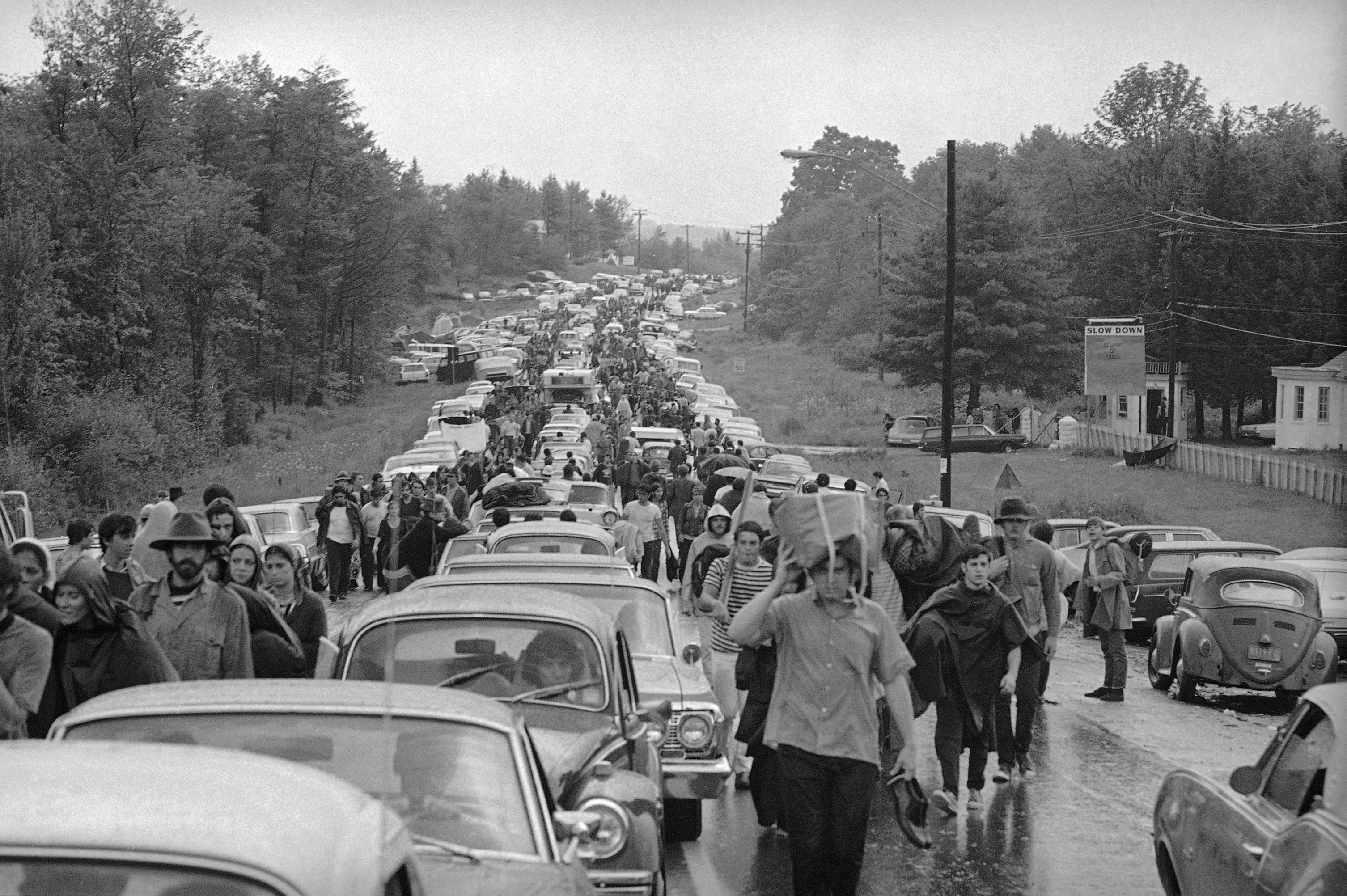Back to the Garden: Remembering Woodstock

Fifty years ago, throngs of music lovers descended upon the small town of Bethel in New York’s Catskill Mountains for the Woodstock music festival. An estimated 500,000 people drove, hitchhiked and walked to get to there. It was billed as a three-day festival, but spilled into a fourth day, stretching from August 15 to 18, 1969.
A dairy farmer named Max Yasgur agreed to host the event on his land after the town of Wallkill, New York backed out of holding the festival. Unlike most music festivals today, with tight security and ticket scanners, the idea of accepting tickets for Woodstock was swiftly abandoned as the crowd grew ever larger (the traffic jam was monumental). So the festival was essentially free for anyone who just showed up.
That year, the country was well into the Vietnam War. With a lot of young people fed up with the political climate, Woodstock served as a respite. It was billed as "Three Days of Peace & Music," the slogan used to promote the festival.
Music was the central part of Woodstock and the lineup featured top artists of the day, like Janis Joplin, Jimi Hendrix, the Who, Jefferson Airplane, the Grateful Dead and many more. Despite that stellar lineup, rain, mud, and a lack of food plagued the festival, but that didn’t discourage concertgoers. Instead, Woodstock created a lifetime of memories.
The legacy of the festival means something different to everyone. In this FUV News special, Back to the Garden: Remembering Woodstock, we spoke to some of the people who were there 50 years ago. They reflect on some of the most iconic performances in music history, and share some of the most memorable experiences of their lives.
Glenn Weiser
Glenn Weiser was 17 years old when he went to Woodstock. He went with a group of friends from his hometown of Glen Rock, New Jersey, and arrived at the festival site on Thursday night.
For Glenn, the highlights of the festival not only included the lineup, but also revolved around the spirit and camaraderie of Woodstock: “The feeling of brotherhood was very pronounced...People were very open and accepting of each other.”
He stayed the whole weekend since he didn’t have a job and was between his junior and senior year of high school. To him, Jimi Hendrix was the peak of the weekend, in addition to the friendly encounters and feelings of acceptance that he had with “fellow longhairs,” which he describes as something he misses the most about the 60s.
The legacy of Woodstock is that it showed “what kind of world we could have if people dedicated themselves to living in peace with each other.” Glenn hopes that Woodstock can act as “an example for future generations” on how to live together.
Minda Frank
At 18 years old, Minda Frank and her best friend Jean hitch-hiked their way up to Woodstock from Brooklyn. Back then, hitchhiking was “more acceptable,” and she was excited to go with Jean. Together, they were “just two crazy girls looking for excitement and adventure.” They didn’t buy tickets or bring any gear -- they just hoped for the best. When they got there, Minda remembers thinking, “This is it?” It was just “a field that didn’t look like much- no fences, no admission gates, just people milling around.”
She describes Woodstock as “a weekend of wandering around, listening to great music and talking to very, very, very nice people.” During the festival, Minda got separated from Jean and started to panic. But when Santana came on, she says that feeling changed, as if everything was coming together.
She eventually found Jean, and they got to listen to performances from the Jefferson Airplane and John Sebastian. What kept her going the entire weekend was the attitude of the crowd because everyone has a good attitude; there was “no hate; only good feelings.”
George Klitch
Kate Walter
Marc Flaherty
Joey Reynolds
In his 20s, Joey Reynolds was the number one disk jockey in America at the time of Woodstock. He says at the time, it was “exciting to go where the music was.” He remembers the festival originally being advertised as the Aquarian Festival, then the Bethel Music Festival and eventually Woodstock.
Experiencing a mass of roughly 500,000 felt like an “amazing congregation” to him, and he was impressed by the spontaneity of it all. At the time of Woodstock, Joey describes the country as being “a positive thinking nation built on growing.” He says that “Woodstock was about celebrating things that worked.”
Marc Greenberg
Marc Greenberg was 18 years old and living on Long Island when his friends asked him if he wanted to go to a music festival. He said yes, hopped in the Volkswagen and didn’t even ask where they were going. When they arrived, Marc was on his own because he got separated from his friends after he went back to the car to get his clothes. While he was walking around the site, he felt there was an “incredible awareness of this community” taking place on the site.
While Jimi Hendrix was the best performance he’d ever seen, two interactions within the crowd stick out in his mind the most. The first was seeing and taking part in people picking up garbage off the ground without being told to do so. The second interaction took place during a bout of rain. People quickly grabbed tarps to cover the electrical equipment. What surprised him was that no one was instructed to do this; rather, it was instinctual among the crowd, which he felt “affirmed our connectedness.”
Marc has been working with people experiencing homelessness for 35 years and says he still carries the spirit of Woodstock with him: “Whatever we want to do together, we can do it."
Bob Gruen
Nancy Elsas
*** Eliot Schiaparelli, Nora Thomas, Valeria Villarroel and Rafique Louison also contributed to this project. Videos by Maddie Bristowe***

